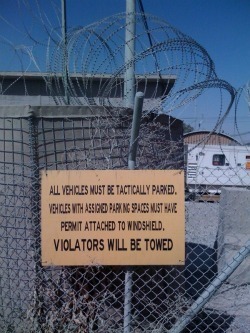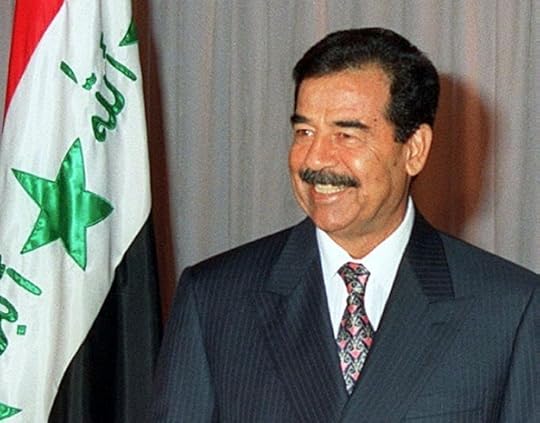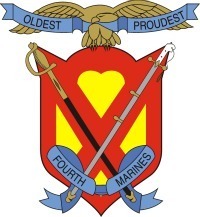Thomas E. Ricks's Blog, page 213
December 8, 2011
PTSD: The key is to re-engage life by managing the hyperarousal symptoms

By Mark Hammel
Best Defense guest columnist
As in all human endeavors, knowledge is power. Therefore, in treating an
individual unfortunate enough to be suffering from Posttraumatic Stress
Disorder (PTSD), I begin by explaining that PTSD is neither an illness nor a
weakness, but rather, an injury. As with all injuries, it is due to exposure to
a force that undermines the integrity of a biologically adaptive system of the
body. In the case of an injury to the musculoskeletal system, the force is
typically of a kinetic nature, such as with a badly sprained ankle. In the case
of PTSD, the force is initiated by the perception of mortal danger giving rise
to a wave of neurological activity so great that the stress response system of
the brain is damaged. Think of this as a power surge.
The stress response system is one and the same as the system that responds to
the perception of danger with the fight-freeze-or-flight response. I've found
it useful over the years to refer to this system as the
danger-monitoring-and-response system of the brain. It is the malfunctioning of
this injured system that gives rise to the symptoms that we have come to know
in the aggregate as PTSD.
Under normal conditions, our five senses work tirelessly in the background,
monitoring the environment for any change in ambient conditions that might
represent danger, such as a novel sound or smell, or perhaps movement on the
periphery of our visual field. When such a change occurs the system initiates
an immediate IFF, consulting its own knowledge base of previous experience,
i.e. memory, and at the same time readies itself to unleash the
fight-freeze-or-flight response should our memory turn up a match for something
that could do us harm.
When the system is impaired, as in the case of PTSD, it enters a sort of safe
mode, where the danger-monitoring-and-response function supersedes all other
normal functioning. The victim becomes preoccupied with danger, accompanied by
an impaired ability to muster the attention and motivation to engage in the
myriad of biopsychosocially adaptive activities that uninjured humans
accomplish with relative ease.
I hope this explanation makes it easier to grasp the source of two major groups
of PTSD symptoms: hyperarousal (e.g. hypervigilance, exaggerated startle
response, sleep disturbance, etc.), and avoidance and numbing.
A third group, reexperiencing symptoms, among them so-called flashbacks, is
perhaps less easy to grasp, but surely the most salient to victim and
clinicians. Normally, when we experience something it brings about a change in
the brain that results in the formation of a memory. When we recall it, it is
clearly in the realm of having occurred in the past, the there-and-then. In the
case of a traumatic experience, the transformation into a memory is incomplete.
It exists in a kind of limbo where it is maddeningly reexperienced as occurring
in the here-and-now. [[BREAK]]
For those of you who are still with me, I will close by stating that in my view
it is the salience of re-experiencing symptoms that has led to a massive
misallocation of therapeutic resources towards trying to reduce these symptoms:
the endless hashing and re-hashing of traumatic experiences.
I began my VA internship 30 years ago, which included weekly visits to the
Queens, NY Vietnam Veterans Outreach Center, "Help without Hassles."
The service under which these community-based counseling centers is still
administered is the Readjustment Counseling Service. Perhaps it was this rubric
that helped me understand that my focus as a clinician should be on helping
PTSD victims overcome avoidance and numbing by re-engaging with everyday life
via mastery of symptoms of hyperarousal.
This is what helps them move into the here-and-now with re-experiencing
symptoms becoming transformed into memories of their own accord. They come back
to life.
Mark Hammel, Ph.D., is a counseling psychologist
in private practice. With 30 years of experience in the treatment and
rehabilitation of seriously injured patients, both veterans and non-veterans,
he is an exemplar of the virtues of government investment in education and
training.
Not just busted in Bagram: Also, you tactical types can get towed in Kandahar!

As a follow-up item to yesterday's post about
the
blown-up captain getting a ticket in Bagram for not wearing a reflector
belt, a congressional staffer passes along this photo he took at the big base
at Kandahar air field in 2009.
Joseph Heller wrote in Catch-22 that it is the nature of military organizations that
staffs established to support line units eventually begin thinking that the
line units work for them -- and treating line soldiers like it.
What should I read to understand why Napoleon was a great battlefield leader?

I woke up one morning and over my café au lait realized I
knew nothing about Napoleon Bonaparte, probably the most significant Western
military leader in modern history, so I poked around a bit and bought David Chandler's
Napoleon,
which seemed to be a standard text.
I read the Chandler, put it down disappointed. Lots of
meaningless stuff about troop movements ("Kutusov was still determinedly
withdrawing towards his rendezvous at Znaim with Buxhowden," p. 65) but little
of what I was looking for about what Napoleon did that made him different from
others, what his innovations were, how the enemy adjusted, and what he did
next. Chandler's concluding section, on Napoleon and the art of war, did some of that -- but not the previous five
chapters.
I'd welcome any suggestions for a book on Nappy that
illustrates and discusses him as a military leader, and even compares him to
his contemporaries.
Also, best book about Wellington vs. Napoleon?
December 7, 2011
Blown up in the boondocks, then busted in Bagram for not wearing a reflector belt

Another episode in the department
of "shit you can't make up," from a guy
I know:
--
"I
had a company commander (Spring '09) who was in the remotest part of our
province and had been medevaced after getting blown up and knocked unconscious.
They sent him up when the medevac came for a more seriously wounded soldier.
While he was on Bagram, he was feeling better and they let him go walk the main
to go to a DFAC for dinner. He was in the only uniform he had, complete with
burn marks.
He
was stopped by MPs who were posted and writing tickets to soldiers who were not
wearing a reflective belt. When that story got around, we were wondering
what world he had just come from because it wasn't the same as the units who
were fighting the war.
I
think you understand how crazy it seemed to us (the line guys) that someone (definitely
a CSM!) posted MPs for the specific purpose of writing tickets to soldiers not
following the asinine policies that had no basis/grounding for the war we
were/are fighting. Think about the implications of that on US manpower
--how much the nation invested in getting those soldiers trained to deploy to
combat, what it takes to sustain those soldiers over the course of the
deployment ... and this is what we are going to use them for? It struck me as a
terrible waste and I remember talking about it with the company commander. We
both commented on how we had requested MPs to help mentor ANP but we couldn't
actually get any real MPs to do that mission."
The Saddam I have come to know

By David
Palkki
Best Defense department of dictatorial archives
I'm
grateful to Tom for inviting me to present a few highlights from The Saddam Tapes: The Inner
Workings of a Tyrant's Regime, 1978-2001, which Cambridge University Press just published. I had the
good fortune to co-edit this study, with Kevin Woods and Mark Stout, at the
Institute for Defense Analyses for the Office of the Secretary of Defense
(Policy). Our book is based on a review of several thousand audio files (and a
smaller number of video files) that U.S.-led forces captured from Saddam
Hussein's regime. The recordings cover several decades' worth of Saddam's
meetings with his cabinet, Revolutionary Command Council, generals, tribal
sheikhs, visiting dignitaries and others.
The
book is intended more as an invitation to scholars to conduct research using
digital copies of the original records (and translations) at the Conflict Records Research Center (CRRC) than as an effort to
compile definitive conclusions or policy recommendations, yet certain patterns
and insights have surfaced as a result of our efforts. In this blog I'll touch
on three.
--First,
Saddam was not in America's hip pocket during the 1980s. In fact, he was far
more antagonistic toward and skeptical of the United States, even at the height
of U.S. support for Iraq during the 1980s, than scholars have acknowledged. The
United States was behind the Iranian Revolution, Saddam privately asserted, "to
scare the Gulf people so they can have a [military] presence and arrange the
situation in the region." After Iran-Contra revelations made clear that the
United States had clandestinely armed Iran and provided it with military
intelligence on Iraq, Saddam complained to his inner circle that the Americans
were still "conspiring bastards." From
Saddam's perspective, the entire episode was intended to harm Iraq (not to help
the Contras or free U.S. hostages). He referred to the incident as "Irangate,"
held at least seven meetings to analyze the significance of the revelations,
and described U.S. behavior as a "stab in the back." In May 1988, Saddam instructed his advisors,
"We have to be aware of America more than the Iranians" because "they are now
the police for Iran, they will turn anything they find over to Iran." In September
1988, just after the war had ended, Saddam expressed conviction to his advisers
that the United States was behind a recent attempt on his life.[[BREAK]]
--Second,
when it came to his worldview, what Saddam said in public was very similar to
what he said in private. Though Americans often discount what dictators say in
public, Saddam was generally sincere in his public rhetoric. Saddam's
conspiratorial outlook, specifically his anti-Semitism, provides a case in
point. Some scholars have presented his anti-Semitic public speeches as
insincere rhetoric designed to solidify his domestic base or accrue Iraq
support from the Arab street, and deemed it unreflective of his actual
thinking. The frequency of Saddam's anti-Semitic comments in his private
meetings suggests otherwise. In multiple recordings, Saddam spoke of the need
for the Iraqi leadership to read and study The Protocols of the Elders of
Zion, an infamous anti-Semitic tract forged by the Tsar's secret police. He
explained in a meeting from the early 1990s, "I do not believe that there was
any falsification with regard to those Zionist objectives, specifically with
regard to the Zionist desire to usurping-usurping the economies of people."
"The Jews are greedy," he explained to his advisers on a separate occasion.
Saddam's anti-Semitism was tempered by respect for his formidable adversary and
by his famous pragmatism, and he certainly had legitimate reasons to fear
Israeli intrigues, yet his anti-Semitic hate speech still stands in need of
greater recognition and analysis by scholars as an important aspect of his
belief system.
--Third,
Saddam believed that Iraqi acquisition of a nuclear weapon would enable it to
liberate Israeli-held Palestinian territories. Iraq did not seek nuclear
weapons to initiate a nuclear first strike against Israel; rather, Saddam
explained, he wanted a nuclear weapon to deter Israeli nuclear weapon use so
Iraq could wage a bloody war of attrition:
The most important requirement is that we be present in Iraq
and Syria and will have planned ahead that the enemy, the air force, that the
enemy will come and attack and destroy, etc. We should bear it and keep going -
and go put pressure on our Soviet friends and make them understand our need for
one weapon - we only want one weapon. We
want, when the Israeli enemy attacks our civilian establishments, to have
weapons to attack the Israeli civilian establishments. We are willing to sit
and refrain from using it, except when the enemy attacks civilian
establishments in Iraq or Syria, so that we can guarantee the long war that is
destructive to our enemy, and take at our leisure each meter of land and drown
the enemy with rivers of blood. We have no vision for a war that is any less
than this.
For
more along these lines, see here or here.
Of
course there are many other insights and really cool transcripts, but for those
you'll need to read the
book.
David Palkki
is the Deputy Director of the
National Defense University's Conflict Records Research Center.
Where are the colors of the 4th Marines?

And is it true that the regiment
is not allowed to bring them back to the United States? A smart retired colonel
wants to know.
It reminds me that the other day a historian was telling me
about being in a museum in Beijing and seeing the colors of the Army's 31st
Infantry Regiment, lost in fighting on the east side of Chosin Reservoir late
in 1950.
December 6, 2011
The word at Fort Leavenworth on moral growth, or not, among West Point cadets

Kids, you can't make this stuff up. Our recent discussion of
character
and ethical issues (like sadism coexisting with an honor code) at West Point
provoked this note from a Best Defense reader :
"For what it's worth, a recent 'tiger team' study
by a team of colonels was recently presented here at the CGSC ethics symposium.
It briefed character development at West Point when compared to other
college-level institutions. The briefer said the results of the study were
rejected. Its conclusion was that 'Bible schools showed the least moral
growth -- but they did show growth. West Point showed a diminution of principled
moral reasoning in its graduates.' The data indicated this diminution was
specifically associated with the first class cadets. So much for improvement."
Gerhard Weinberg's guided tour of some the persistent myths about World War II

I only recently caught up with Gerhard Weinberg's
impressive piece on myths
of World War II that ran last summer in the Journal of Military History.
Some really interesting stuff here:
--Yes, the allies had better resources, he concedes. But, he
says, we also need to understand that they also were "vastly superior" in using
those resources.
--Rommel a hero? Part of his mission in Africa was "to
supervise the killing of all Jews in Egypt, Palestine, and elsewhere in the
Middle East, under the control and with the participation of the murder
commando attached to his headquarters."
--Churchill all wise, Chamberlain a little weasel? A
reminder: "The Battle of Britain was won by fighters Chamberlain had insisted
on having built."
--The Soviets fought the Germans alone for awhile, and whose
fault was that, Joe? By arriving at an agreement with Germany in 1939, Stalin
helped "that country drive the Allies off the continent in the north, then the
west, and then the south. He never ceased to blame others than himself for the
subsequent situation of facing Germany alone on the continent in the east."
--Atomic bombing bad? In discussions of the wisdom of the
those bombings of Japan, people tend to forget "the planned Japanese killing of
all the prisoners of war they held" in case of an invasion.
--This one struck me as a reach, but provocative
nonetheless: Is it time to take "another look" at Chiang Kai-shek, "a leader
who managed to hold much of his country together against a better armed foe for
so many years"?
Now that the gay thing is resolved, can we let soldiers be openly female in combat?

There was some loose talk in the comments last week about
women in combat. Here's some
factual background.
Take it away, Donna.
By Donna McAleer
Best Defense giant slalom correspondent
In March 2011, the Military
Leadership Diversity Committee issued a report to President
Obama and the 112th Congress recommending the elimination of the
Combat Exclusion Policy.
Retired Air Force
Gen. Lester L. Lyles, commission chair, said the recommendation is one way the
congressionally mandated body suggests the military can get more qualified
women into its more-senior leadership ranks. "We know that [the exclusion]
hinders women from promotion," Lyles said in an interview with American Forces
Press Service. "We want to take away all the hindrances and cultural biases" in
promotions.
Written in 1994 combat exclusion policy, precludes women from being "assigned" to ground combat units, but
women have for years served in ground combat situations by serving in units
deemed "attached" to ground units, Lyles said. That distinction keeps them from
being recognized for their ground combat experience -- recognition that would
enhance their chances for promotion, he said.
In mid-November Rowan Scarborough
of the Washington Times reported that top defense officials
are wrestling to find a collective position on whether to allow women in direct
ground combat. This seems to be a
never-ending, perpetually debated and continually unresolved issue.
Earlier this year, Australia lifted all gender-based
restrictions on its servicewomen. Other
nations where women are able to serve in active combat roles include Holland,
Canada, Denmark, Finland, New Zealand, Sweden and Israel. The Dutch repealed formal restrictions on
women in combat roles in 1979.
The United States has been engaged in combat in
Afghanistan and Iraq longer than in any previous war. More than 230,000
American women have engaged in combat operations in Afghanistan and Iraq. Women
make up nearly 15% of the active-duty force.
In 2011, National Defense Authorization Act Congress required the
defense and service secretaries to review policies "to determine whether
changes are needed to ensure that female members have an equitable opportunity
to compete and excel in the Armed Forces." That report was due to Congress on
April 15. The Pentagon requested an extension through October. As of Nov. 16, 2011, that reported had not
been submitted.
Given
the perpetual debate, perhaps it is not surprising that the Department of
Defense failed to meet an October deadline.
Marine Corps
General James Conway was quoted, "I don't think you will see a change because I
don't think our women want it to change. There are certain demands of officers
in a combat arms environment that our women see, recognize, appreciate and say,
'I couldn't do that.' "
[[BREAK]]
I beg to
differ with Gen. Conway. There are
others who say: I would do that, I want to do that and I am doing it. Many
servicewomen and veterans particularly those serving in engineering, military
police and military intelligence units find it insulting considering so many
have patrolled mounted and dismounted in the same areas of operation as
infantry units.
General Ray Odierno, Chief of Staff of the Army, has
publicly acknowledged he wants and supports some of the restrictions being
lifted such as female
intelligence and signal officers being able to serve below the brigade level in
combat battalions. Women are a combat
multiplier.
"We need
them there. We need their talent," the Army chief said. "This is about managing
talent. We have incredibly talented females who should be in those positions.
So I have to work toward us taking a better look at that." This was a similar position taken by Chief of
Naval Operations Admiral Gary Roughead and Secretary of the Navy Ray Mabus in
the October 2010 announcement decision to open two of the four classes of
nuclear submarines to women.
Women play a critical role in counterinsurgency operations
(COIN) in Afghanistan. More than two
years ago, the Marines created Female
Engagement Teams (FETs) as a force multiplier to
engage and interact with both Afghan women and men in a way not possible for
male soldiers.
Recently, the U.S. Army Special Operations Command began
deploying servicewomen as part of front-line commando units. Cultural Support Teams (CST), as
they are known, assist Special Forces and Ranger units with the female and
child population in Afghanistan providing intelligence support and social
outreach.
The combat exclusion policy was instituted for a linear
battlefield with front and rear lines of combat clearly demarcated. Today's
asymmetric battlefield requires soldiers to prosecute the war and engage in
combat in a 360-degree environment. Women are everywhere on the battlefield.
The law has not yet caught up to the historical as well as present reality of
war. The exclusion policy does not keep women out of combat, but it does
prevent them from gaining the battlefield experience required to rise to positions
of strategic decision-making and national and international security influence.
"The challenge facing the president will be to
identify leaders who will provide him with disinterested advice, informed by a
concern for the national interest, and in, doing so, to avoid the appearance of
the reality of politicizing the senior leadership," said Andrew J.
Bacevich, a retired Army colonel and professor of history and international
relations at Boston University. Following a decade of war, budget cuts and economic
turmoil, senior military leaders will contend with even greater fiscal
constraints, the need to modernize, and to improve significantly the health and
morale of Armed Forces personnel stretched beyond their limits.
While the US Army has its first female 4-star general,
women comprise less than 6 percent of that service's senior leadership, despite
constituting more than 17 percent of the Army's active duty officer corps.
Including women at the senior most strategic leadership and decision-making levels
is an issue of national security. No women are eligible to serve at the top
ranks within the military itself.
United States would be well served by increasing the
number of sharp minds at the planning and negotiating tables. To do this, the
ground combat exclusion policy must be abolished to grant women the opportunity
to gain the same experience as their male counterparts. If abolished, it will
take a generation, at least 30 years, for military women to gain the
appropriate tactical, operation and strategic experience.
Perhaps the inclusion of a few more women with broad
tactical and operational experience would provide some fresh thinking on waging
war, creating peace and influencing international security.
Combat is the core of the profession of arms. The military
has an absolute right to expect servicewomen to engage in combat, as female
Americans have been doing in Iraq and Afghanistan for years. This debate has been going on for decades,
with advances that seemingly are at times best measured with a micrometer.
Nothing spotlights better gender equality of our military in the field than
this fact: women are shedding blood and dying on battlefields side-by-side with
men. Bullets, RPGs, and IEDs know no gender.
How many reports will be required to determine that
eliminating the combat exclusion policy will increase the military's ability to
maintain an agile, flexible, committed and responsive force?
It is time for the Department of Defense and service
chiefs to stop skirting the combat exclusion policy and eliminate it all
together. This should be a matter of
institutional integrity for the military's senior (male) leadership.
Donna McAleer of Park City, Utah, is a West Point
graduate, a former Army officer and the author of
Porcelain
on Steel: Women of West Point's Long Gray Line
(Fortis Publishing,
2010).
December 5, 2011
Out of Iraq: Only 26 shopping days left

The U.S. Embassy
just tightened restrictions on movements of American personnel inside
the Green Zone.
Meanwhile, when
someone is right, I listen. Adam Silverman called Iraq right this year. Here
are his thoughts now.
By Adam L.
Silverman, PhD
Best Defense guest
columnist
A
little over a month ago Tom wrote a column dealing with the US's rapidly
approaching deadline to leave Iraq.
At the time I sent him some remarks, which he asked me to pull together
for a guest column. I agreed on the
condition that I would have the time to tone down the tenor, if not the
content, as this topic hits close to home for me - as I'm sure it does for many
Best Defense readers, as well as many other Americans (and our coalition
partners as well).
As we are within
final month in Iraq, we
are once again beginning to see reports
of new violence. As I have written
here at Best Defense, as well as other sites, I think this is likely to become
the Iraqi reality once we draw down to just the military personnel assigned to
the Embassy. Part of the reason for my
take is that the Iraqis have been communicating to us - in words and in deeds --
for several years that this is what is going to happen. Even as the Sawha/Awakenings was first gathering
press, it was clear in
what little reporting there originally was on the movement, its
leaders, and its
goals that their
long term intention
was to strike at the Shi'a, specifically the exile Shi'a that we had
empowered, once they were able to do so (as in once we were gone). I interviewed dozens of tribal and religious
leaders, (local) elites, notables, non-elites, and internally displaced
Iraqis. The vast majority of them, both
Sunni and Shi'a, had grave concerns over the government we helped to empower,
as well as the members of that government and their ties to Iran and how this all
related to the average Iraqi.
The Shi'a exile
dominated government of Iraq, especially Prime Minister Maliki, has made no pretense of
indicating it wanted to roll up the Awakenings' members. From a
very heavy handed Sons of Iraq (SOI) transition that failed to foster and
promote societal reconciliation and civil society reformation to
cracking down on both the Awakenings and the SOI, Maliki has demonstrated
that his goal is consolidation of power.
One
of the three Iraqis elected to parliament on the Iraqiyya list earlier in the
year, then suddenly faced with an arrest warrant by Maliki's government in
order to change the electoral outcome was an Awakenings and SOI leader (full
disclosure -- he was also the subject of one of my social history/tribal study
interviews, which you can read at the link). Add to this the fact that the Kurds still
have plans of their own for Kirkuk, let alone an independent Kurdistan, and
post U.S. presence Iraq looks to be unsettled and unpleasant for a long time to
come.
When it comes down
to it, and what I think has so many so upset, anxious, and out of sorts
regarding the looming US departure from Iraq, is that it did not necessarily
have to be this way. To paraphrase the
Best Defense reader and commenter who asked about accountability in regards to
Don't Ask, Don't Tell -- at what point do journalists, let alone the
American people, hold those who made wildly inaccurate assessments,
predictions, estimations, and gave absolutely horrid, hugely uninformed,
gigantically incorrect policy advice responsible for the strategic
failure that is Iraq? [[BREAK]]
While we had many
tactical and operational successes in Iraq, ultimately the failure to leverage
the openings we were presented with as a result of the Awakenings, the Baghdad
ethnic cleansings, and then the consolidation through the Surge to pressure the
Iraqis to do the hardest of things -- societal reconciliation is an act of
strategic malpractice that should be a warning for all future generations. The national ends that were established, or
reestablished, in 2008 to capitalize on the opportunities we had been presented
with and worked so hard to solidify were so far out of touch with the reality
on the ground, let alone the strategic reality of what needed to be done, that
it makes one wonder if the folks giving advice could actually spell Iraq, let
alone find it on a map! Provincial
elections and an outsize SOFA agreement, really, that's what we needed to focus
our strategic, government to government efforts on in 2008? And what is even worse is that the people we
hand picked to run Iraq turned right around and thanked us by running out the
clock and rolling us on these two issues, let alone settling the last election
not in Baghdad, not in DC, but in Tehran and Qom, so that we never got to the
hardest part of any COIN fight: the societal reconstruction. And all of these failures track back to, or
were cheered on by, the same group of names.
They still have their think tank positions or their spots doing written
or television commentary and punditry, many are already advising the next batch
of GOP presidential hopefuls or biding their time for a change of party in the
White House to wind up back at the center of the game instead of its
periphery. Some of them even managed to
get on TV a week or so ago to be expert questioners at a GOP primary debate. All of them should be examples of who not to
listen to when it comes to foreign, defense, security, and I would argue, any
other policy!
The simple fact of
the matter is that the end game in Iraq was all too obvious to predict. The planning for what to do after the initial
invasion was virtually non-existent and definitely not a priority for the Bush
(43) administration. The wise men making
the decisions, the elder statesmen advising them, and the brain trusts cheering
them on from perches at think tanks, TV, radio, and print media knew best. The
highly qualified individuals we sent to oversee the initial reconstruction
known as the Coalition Provisional Authority had
all the right answers. They knew all
about Iraq and Iraqis and Arabs. Not
because they had any particular expertise regarding Iraq, Iraqis, Arabs, and/or
the Middle East, but because they had fancy titles (like Insert Adjective Here
Scholar) or fancy op-ed positions (in which to posit that just six more months
would do the trick) or they had the right connections (always good to carefully
pick one's own parents or colleagues before they get a government appointment)
or because they had drunk their own or other's kool-aid. And they are back providing the same type of
insightful and courageous analysis of what is going on in Iran and arguing that
once again American men and women, military and civilian, should be put in
harm's way - just as long as none of those American men and women happen to be
them or their relations. There is a just
and righteous virtue in being a leader in the 101st Chairborne
Division and members of that elite and crack unit never have to say they are
sorry or wrong.
The sad reality is
Iraq might not have had to go down the way it did. Regardless of what one might think of the
reason, or reasons as they kept growing and evolving, for invading Iraq, once
it was underway some proper planning, a modicum of humility and competency, and
bringing to bear some actual knowledge and understanding of Iraqi identities
(from the micro to the macro), structures and institutions (and how to line
them up with the identities), and how the interactions between these things
produce resiliency to or willingness to accept change might just have allowed
us to achieve better strategic outcomes.
The strategic failure that Iraq metastasized into does not negate all
the hard tactical and operational work or reduce the successes at those levels,
but it did not have to turn out this way either.
Adam L.
Silverman, PhD is the Culture and Foreign Language Advisor at the US Army War
College. The views expressed here are
his own and do not necessarily reflect those of the US Army War College and/or
the US Army.
Thomas E. Ricks's Blog
- Thomas E. Ricks's profile
- 436 followers



